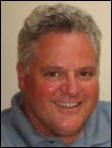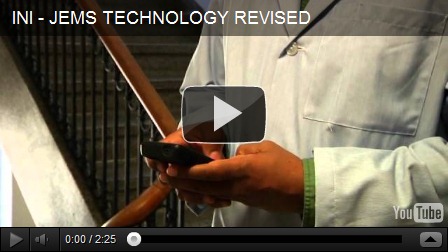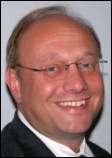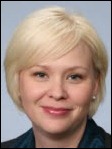'Samantha Brown points out that, “Healthcare, like every other industry, gets caught up in the idolatry of the ‘innovators.’”' I…
Readers Write 10/17/11
Submit your article of up to 500 words in length, subject to editing for clarity and brevity (please note: I run only original articles that have not appeared on any Web site or in any publication and I can’t use anything that looks like a commercial pitch). I’ll use a phony name for you unless you tell me otherwise. Thanks for sharing!
Video to Smart Device Technology Improves Patient Care in Rural Areas
By Kevin Lasser
Innovative technologies are connecting doctors to experts around the globe, instantly and in real time. These innovations, including video to smart device technology, address the significant gap that rural patients experience compared to their urban peers. By improving access to expert medical care, innovations that can connect physicians to specialists are improving the quality of patient care and the outcomes of that care.
Access to specialty care is a challenge that rural Americans must tackle daily; according to a study published by the American Hospital Association, more than half of Americans in rural areas travel more than 20 miles for specialty care, with an average reported distance of 60 miles.
The plain fact is that rural Americas do not have access to adequate health care.
- 50 million Americans live in rural areas, yet there are only 65 primary care physicians per 100,000 rural Americans. By comparison, there are 105 physicians for every 100,000 urban and suburban Americans.
- Rural areas have less than half the number of surgeons and other specialists than urban and suburban areas.
- Saving lives means changing the status quo.
In emergencies, these rural patients can be in the fight of their lives against the clock. The current status quo for doctors in rural areas is to transport patients who need emergency specialty care to another physician. In life threatening emergencies, this delay in care can cause serious and irreparable harm.
Video to smart device technology is bridging the gap between physical location and access to expert care. By allowing a doctor to broadcast video over a secure network, a specialty physician can see the patient’s condition and advise on appropriate care.
“Video to smart device technology allows physicians immediate access to a patient via the mobile phone that they already carry,” said Dr. David Wang, director of the INI Stroke Network. “Other solutions, including personal computers or laptops, are cumbersome and impractical.”
Since the technology is real-time, diagnoses and recommendations can be made and implemented quickly; this real-time technology can save a life in settings where access to immediate expert care is required. The INI Stroke Network recently produced a video on how its use of video to hand-held device technology is saving lives in critical situations.
For the expert, including the stroke specialists in Dr. Wang’s practice as well as cardiologists, neurologists and specialty internists, video to smart device technology allows easy consultation with emergency room doctors and rural health care providers. Combined, these physicians deliver best in class health care to patients, regardless of their physical location.
Using technology to connect rural physicians to specialists in urban areas allows the patient to stay with a doctor that they know and trust while still receiving the best medical care. Real-time, real expertise leads to real care that can save a life.
Leveraging the power of innovation can change the outcome of care for rural patients. When access to expertise is critical, the phone in a doctor’s pocket might be more important than any other tool in their medical bag.
Kevin Lasser is president of JEMS Technology of Orion, MI.
Imaging’s Test: The Balance of Cost and Quality
By Steven Gerst, MD, MBA, MPH, CHE
Providers will be put to the test as they deal with President Barack Obama’s recent proposal to trim trillions from the deficit and hundreds of billions from Medicare. Specifically, radiology professionals should take note.
The proposal calls for nearly $1.3 billion in savings by raising the assumed utilization rate on some imaging equipment and by requiring referring doctors to get prior authorization when ordering scans. It is still unclear if this authorization process will be managed via the now dominant radiology benefit management (RBM) model. Yet a better model exists.
Today, more than 150 million patients are at the mercy of RBM companies. Health Affairs reported in their May 14, 2009 issue that, on average, telephonic utilization review protocols, denials, and appeals processes costs the average physician $68,274 per practice. This wasted time and cost totals between $23 and $31 billion, annually. This tremendous cost is unnecessary, especially based upon the availability of new electronic, point-of-order, appropriateness criteria-driven clinical decision support (CDS) systems.
Evidence-based medical imaging CDS systems are proving their value. According to a recent study published in the Journal of the American College of Radiology, physicians at Seattle-based Virginia Mason Medical Center saved the institution 23% to 26% on selected imaging procedures by using a CDS. At the Everett Clinic, also in the Seattle area, from January of 2009 to November 2010, the number of CT and MRIs dropped by 39% (from nearly 210 to 128 images/ per 1000) following implementation of an evidence-based, point-of-order CDS solution.
These solutions will become increasingly important under newer “pre-funding” models which reward the most appropriate utilization for the lowest possible cost and the highest possible quality of patient care. With bundled payments, growth in capitation, and the pressures for DRG cost containment, providers, payers and blended ACO organizations will face pressure for both quality improvement and cost containment. Decision support delivers value on both fronts. In the next few years, CDS systems will likely replace the current contentious, inefficient telephonic utilization review protocols by leveraging point-of-order technology, authorization, and payment mechanisms. CDS is destined to become mainstream tools for physicians under healthcare reform.
It is estimated that more than one third of all medical imaging tests may be medically unnecessary and 20% may be unnecessarily duplicative. There is significant merit in attempts to curb unnecessary testing and duplicate tests that are contributing to cost increases. As the Virginia Mason and Everett Clinic Studies indicate, when ordering physicians are provided with evidenced–based criteria at the point of ordering, a physician appears more likely to order the most appropriate test for the patient resulting in the highest quality of service and potentially at the lowest possible cost. Health reform and ACO development create financial incentives to rapidly adopt this new technology.
In the RBM model, a UR nurse or medical director reads criteria off a utilization review screen during call center discussions, and the burden of that call falls upon the ordering physician, even though that physician is not reimbursed for the study that is being ordered. It is much more efficient to make criteria available to physicians directly at the point of care. Technology can replace an inefficient and costly middleman model.
Most RBMs and carriers develop their protocols around the American College of Radiology appropriateness criteria. With a CDS, these criteria can be loaded directly into the CDS system as an integrated application within the hospital and physician’s EMR. In this scenario, the most appropriate physician imaging orders (ranked levels 7, 8 and 9 on the ACR criteria) could automatically bypass the UM or RBM process electronically and receive an instantaneous authorization for approval and payment. This is known as “Gold Carding.”
For tests that are clearly inappropriate (ranked 1, 2, or 3), the ordering physician could be given the clinical evidence electronically at the point of ordering through a decision support system to select a more appropriate test (without having to step out of the normal ordering workflow). In some instances, physicians may want to override the system. Here, the doctor should be able to enter free text to include the reasons for not following the ACR criteria. This is an important part of the audit trail.
Decision support systems allow the hospital to carefully monitor ordering trends by individual practitioners. Those with inconsistencies may be reviewed in conjunction with the medical director to determine causes and to discuss potential resolutions going forward.
Depending on the business needs of the hospital or ACO, if deemed inappropriate, the test may be programmatically blocked electronically from ordering. For proposed studies which score in the 4, 5, and 6 range of the ACR rankings, the CDS system itself may suggest an alternative, more appropriate test. CDS systems should easily allow physicians to select this better test without exiting the workflow.
What about Meaningful Use? While Stages 2 and 3 are yet to be solidified, it is believed that Meaningful Use Stage 2 will require 60% of all radiology orders to go through the hospital’s EMR CPOE function. Stage 3 has proposed 80%. A medical imaging clinical decision support solution will, therefore, become a powerful tool in the hands of a conscientious hospital or ACO medical director.
In the past 10 years, the use of advanced imaging procedures (CT, MRI, etc.) has more than doubled in some large health systems. In these systems, clinician decisions drive roughly 84% of cost of care. While estimates vary, a conservative average for an advanced imaging procedure cost is $429 per study. On average, assume a typical hospital performs 230 procedures per day, or 84,000 studies per year. For a hospital at risk under a DRG, bundled payment model, ACO shared savings scenario, Medicare Advantage, Managed Medicaid, or their own employee plan, if just 10% of duplicate studies were avoided, nearly $3.6 million could be saved.
Why wouldn’t an organization use a medical imaging clinical decision support system?
Steven Gerst, MD, MBA, MPH, CHE is vice president of medical affairs for MedCurrent of Los Angeles, CA.
The Perfect Storm: All the Buzz from the Healthcare Business Intelligence Summit
By Laura Madsen, MS
Earlier this month at its annual Medical Innovations Summit, the Cleveland Clinic released a listing of the Top 10 medical innovations for 2012. While most would expect many of the items on the list, such as a novel diabetes treatment and new discoveries with gene sequencing, one of the list’s items took many by surprise. Specifically, according to the list, “harnessing big data to improve healthcare” will be a forthcoming medical innovation.
In May 2011, the McKinsey Global Institute published findings after studying “big data” in five domains. According to their research, “If US health care were to use big data creatively and effectively to drive efficiency and quality, the sector could create more than $300 billion in value every year. Two-thirds of that would be in the form of reducing US health care expenditure by about eight percent.”
Last week, nearly 200 people from provider and payer settings gathered at the Healthcare Business Intelligence Summit offered in its third year in Minneapolis. This year’s speakers represented a myriad of organizations including Northeast Georgia Health System, Hennepin County Medical Center, BlueCross BlueShield of Kansas City, and the Winnipeg Regional Health Authority.
As one of the event’s lead organizers, I give credit to my colleagues who served on planning and organizing committees, and also to those who presented and those who attended.
The day was full of sharing information, observations, and insights around business intelligence (BI) in healthcare. In debriefing with colleagues and pondering my own experiences from the day, the following key themes emerged.
The Perfect Storm For Healthcare BI
Many folks told me they are buckling under the pressure of increasing volumes of data, increasing regulatory requirements, and increasing exposure to data and reports by people across and outside of their organizations. Especially with the HITECH Act and Meaningful Use, we have the perfect storm for investment in healthcare data capture, storage, and analytics. Today’s organizations must leverage a new and distinct approach to data, one configured specifically for an ever-changing landscape. Yet caution is necessary. Healthcare is a different animal than retail, manufacturing, and finance.
What About Quality?
Concerns exist about the value associated with data. Healthcare data, especially clinical data, can be subjective. It is fragmented and often incomplete, making analysis and knowledge distillation an ongoing issue. While most know that data quality is critically important, most folks don’t know how to tackle it. Some have decided that they are better off exposing bad data to end users as a way to demonstrate the impact that these end users themselves can have on the quality of data. This, of course, is not recommended.
Where’s the Value?
When talking about data value, a shift is underway. A few years ago at the conference, the question was “Is there value in our data?” Today the question is “How do we determine where there’s the most value?”
Data, Data Everywhere
As data volume increases, so, too do the challenges of data disparity. Data integration is becoming a hot topic. Everyone knows they need to bring disparate sets of data together. Some have done it successfully.Others are just embarking on the adventure. Yet we all know that as data sources and volumes increase, so does the reliance on “Extract, Transform and Load.” ETL is a fundamental practice in business intelligence, yet it is often misunderstood. This seems to be weighing on people’s minds.
ACOs, MU, Etc.
Data reliance is becoming a mainstay in healthcare and increasingly important as Meaningful Use continues to evolve and as the new shared risk model of accountable care is adopted. Most people at this year’s event agree that the industry needs a higher degree of sophistication associated with data management, reporting, and analytics. When discussing MU, ACOs and the like, most organizations reported feeling ill-prepared.
Representatives from CMS led a heavily-attended breakout, with significant discussion on data warehouses to support Meaningful Use. One attendee, a vendor working with MU in ambulatory care, indicated that nearly 50% of the groups he’s worked with in the past few years have more than one EHR and are struggling to determine how to move forward with these multiple environments. One individual from a provider environment said he felt they were being penalized for being an early adopter of EHRs because they had more than one, and as a result, were not sure how to proceed. At this point, they are leaning toward dumping everything and starting over. Even though they will miss some incentives, they will make the final deadline.
The discussion of data EHR and data consolidation raised a major question that’s seemingly on most people’s minds: will there be a time that ONC/CMS will recognize the need and/or value of a traditional data warehouse for healthcare organizations striving to meet MU? If this happens, how will they handle will certification of processes including data integration, data modeling, and reporting?
Perhaps next year at this time I’ll be writing about the ONC’s response to this very question. Until then, best wishes with the unique healthcare challenges and opportunities of big data and business intelligence.
Laura Madsen, MS is healthcare practice lead at Lancet Software of Burnsville, MN.






Re: Ms Madsen’s comments about data warehouses /BI tools and ONCHIT –
“The discussion of data EHR and data consolidation raised a major question that’s seemingly on most people’s minds: will there be a time that ONC/CMS will recognize the need and/or value of a traditional data warehouse for healthcare organizations striving to meet MU? If this happens, how will they handle will certification of processes including data integration, data modeling, and reporting?”
Per the ONCHIT FAQ website: (http://healthit.hhs.gov/portal/server.pt?open=512&mode=2&objID=3163&PageID=20775 ) they have answered her core question, data warehouses that are used to track and report MU-quality data MUST get certified as EMR Modules. There are several vendor products that are on the ONC CAPL list today. If you sell a DW and it will be used by clients for MU attestation, better get certified or else! Certification has now become the minimum cost of doing business for any HIT best of breed vendor. If your product in not certified you are putting your client health provider’s MU Attestation at risk and the full EMR vendors will beat you up on it in a competitive situation.